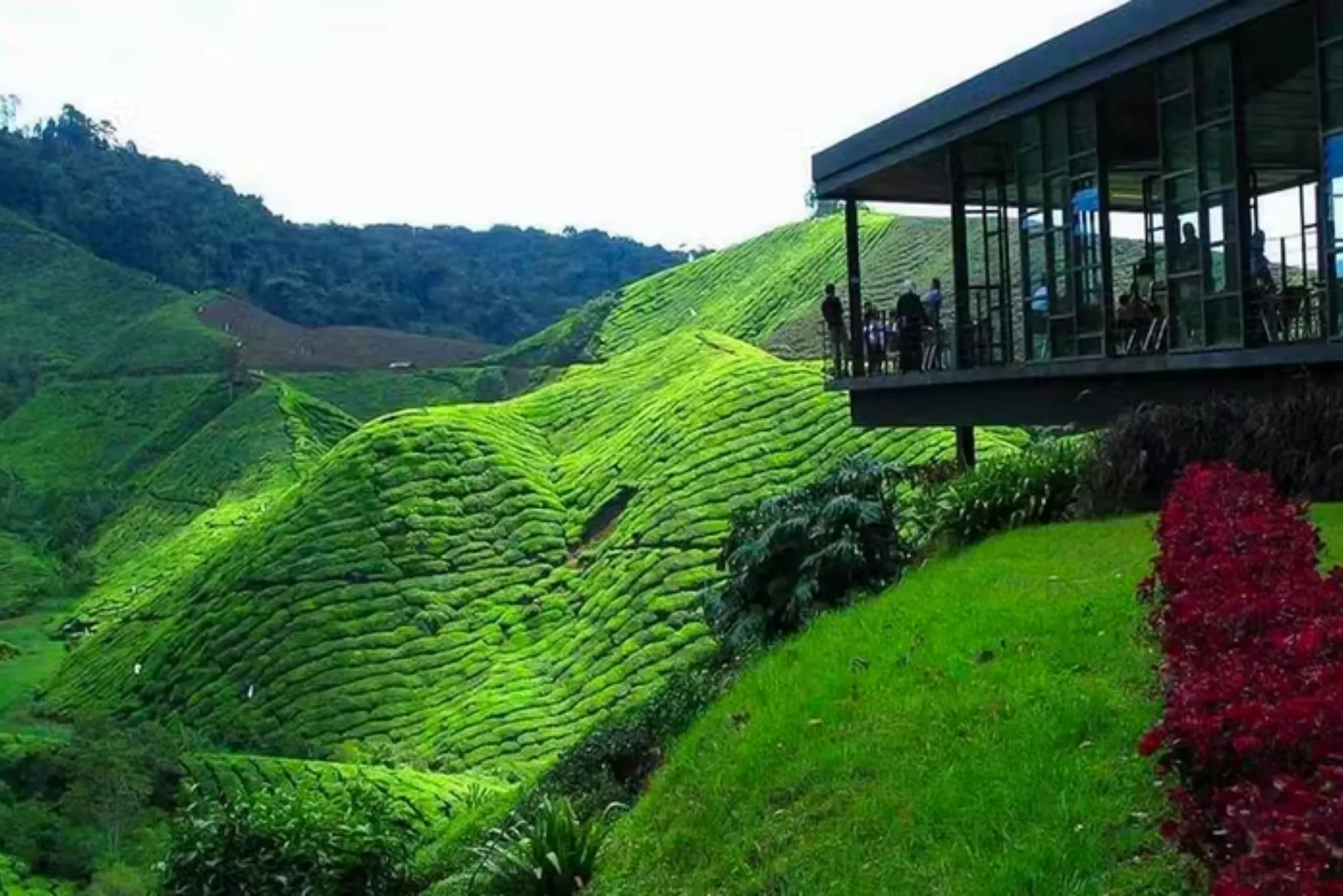Greenhouse farming is rapidly growing across regions like Punjab, Sindh, KPK, and Gilgit-Baltistan, driven by rising demand for high-value crops and climate-resilient farming practices. One of the most overlooked but essential tools for modern growers is a greenhouse area and temperature calculator, which helps optimize space, estimate costs, and plan climate control efficiently.
Whether you’re a beginner farmer in Faisalabad or an agritech student in Karachi, understanding how these calculators work can significantly improve your yield planning and cost management.
What Is a Greenhouse Area Calculator?
Quick Answer: A greenhouse area calculator helps you determine total growing space, layout efficiency, and climate control requirements.
A greenhouse area calculator is a digital tool that computes the floor area, usable planting zone, and environmental measurements needed for optimal crop growth. Many farmers in Pakistan underestimate how spacing errors, structure shape, or temperature differences can reduce productivity by 10–30%.
Agricultural advisors from the PARC (Pakistan Agricultural Research Council) emphasize that “precise greenhouse planning is the foundation of profitable protected farming.” These tools simplify that precision.
Why Greenhouse Area Calculation Matters for Pakistani Farmers
Quick Answer: It reduces waste, improves temperature control, and supports climate-smart agriculture.
Farmers in Chakwal, Multan, Swat, and Quetta face different challenges—temperature swings, water shortages, and land constraints. Correct area calculation ensures:
-
Maximum utilization of available land
-
Accurate ventilation planning
-
Efficient irrigation layout
-
Better heat retention during winter
-
Reduced chances of heat stress during summers
In regions like Gilgit-Baltistan, where cold-resistant structures are essential, area calculations directly affect heating cost projections.
Key Measurements You Need Before Using the Calculator
Quick Answer: Measure length, width, height, and ventilation openings.
Before you open any greenhouse calculation tool, gather:
-
Length and width of your greenhouse
-
Roof style (tunnel, gothic, domed, flat)
-
Wall height
-
Total ventilation openings (doors, side vents, roof vents)
-
Ground slope
-
Preferred crop variety (tomatoes, capsicum, lettuce, herbs)
Experts recommend double-checking the measurements, especially in sloped areas like Abbottabad or Murree where structural accuracy influences heating efficiency.
How to Calculate Greenhouse Temperature Requirements
Quick Answer: Temperature goals vary by crop, season, and greenhouse size.
Temperature affects germination, flowering, and fruiting. For example:
-
Tomatoes: 18–26°C
-
Lettuce: 10–20°C
-
Cucumbers: 20–28°C
Large greenhouses require more BTUs for heating and stronger ventilation for cooling. Farmers in Balochistan, where daytime heat is intense and nights are cold, benefit greatly from combining area calculation with temperature forecasting.
Here is where a greenhouse area and temperature calculator becomes essential—use dedicated tools like the greenhouse area and temperature calculator to simplify heat loss calculations, roofing efficiency, and ventilation planning.
Simple Steps to Use a Greenhouse Area Calculator
Quick Answer: Enter measurements, select greenhouse type, and check results.
Here’s the typical process:
-
Enter the length and width
-
Choose greenhouse style
-
Add roof height
-
Select crop type
-
Input ventilation details
-
Review automated calculations
You’ll instantly get insights about floor space, ideal plant density, and climate adjustments.
How Area Calculators Support Smart Irrigation Planning
Quick Answer: They help determine flow rate, pipe length, and irrigation zones.
Water management is a major challenge in Sindh and South Punjab, especially with rising temperatures. A greenhouse area calculator helps you:
-
Estimate ideal dripline length
-
Identify zones needing stronger flow
-
Calculate tank size
-
Reduce water waste
This supports national initiatives like the Punjab Water Efficiency Program and Youth in Agriculture Initiative, which encourage precision irrigation.
Best Practices for Accurate Greenhouse Layout Planning
Quick Answer: Always align your layout with sunlight direction and airflow.
To maximize productivity:
-
Position the structure east–west for even sunlight.
-
Leave space for pathways.
-
Separate germination areas from adult-plant rows.
-
Use raised beds in wetter climates like Mansehra.
-
Avoid overcrowding—airflow prevents fungal problems.
Farmers in Karachi and Hyderabad often add shade nets during peak summer months to avoid heat stress.
Midpoint – Recommended Tools to Simplify Greenhouse Planning
Quick Answer: Use digital planning tools for area, temperature, irrigation, and daily calculations.
Modern greenhouse growers rely on tech-based tools to streamline their planning. Platforms like Needs Calculator offer practical everyday farming calculators—growth estimators, energy calculators, irrigation planners, and more. If you want access to these tools with a clean interface and fast response time, simply visit Needs Calculator for daily tools.
Additionally, farmers and young agritech professionals in Pakistan benefit from growing ecosystems like Pakistan’s top tech innovation hub, which support digital agriculture, AI-driven farming solutions, and youth-focused training initiatives.
Real-Life Case Example: Greenhouse in South Punjab
Quick Answer: A farmer increased yield by 32% using proper area calculations.
A vegetable farmer in Bahawalpur implemented proper greenhouse area planning before his 2024–2025 growing season. After entering his structure’s measurements into an area calculator:
-
He resized pathways
-
Adjusted ventilation
-
Reconfigured dripline spacing
-
Improved temperature zoning
As a result, his tomato yield increased by 32%, and water usage dropped by 18%.
Expert Tips for New Greenhouse Growers
Quick Answer: Start small, measure accurately, and monitor temperature daily.
Agriculture consultant Dr. Adeel Khan advises:
“A greenhouse is only as good as its planning. Don’t estimate—calculate. Tools exist to remove guesswork and improve ROI.”
Here are expert-backed tips:
-
Begin with a standard 30×96 ft design
-
Track temperature twice daily
-
Use drip irrigation
-
Install two levels of ventilation
-
Avoid planting multiple heat-requiring crops together
-
Recalculate area every time you redesign rows
FAQs
1. What is the ideal greenhouse size for beginners?
Most Pakistani beginners start with 15×30 or 20×40 ft units for easier climate control.
2. Do greenhouse calculators work for curved or dome-shaped structures?
Yes, calculators factor in frame shape when estimating area and temperature requirements.
3. How often should I recalculate my greenhouse layout?
Recalculate whenever you change crop type, bed layout, or ventilation setup.
4. Can these calculators help reduce electricity bills?
Yes. Proper sizing reduces excess heating/cooling loads.
5. Are greenhouse calculators useful in northern cold regions?
Absolutely—areas like Skardu and Hunza require precise temperature planning for winter crops.
6. How accurate are greenhouse area calculators?
Digital tools provide up to 95% accurate estimates when correct measurements are entered.
7. Can students use these calculators for agriculture projects?
Yes, agriculture universities in Faisalabad, Peshawar, and Tandojam encourage them for assignments and field research.
Final Thought
As someone actively involved in Pakistan’s emerging agritech sector, I’ve seen how small digital tools can spark big improvements in farming outcomes. A greenhouse area calculator is more than a measurement device—it’s a planning partner that empowers local growers, students, and young entrepreneurs. In regions like Punjab’s vegetable belt, Sindh’s heat zones, and the cool mountain climates of the North, precise calculations lead to smarter energy use, higher yields, and reduced losses.
With government-backed youth training programs and innovation hubs fueling Digital Agriculture, adopting such tools isn’t just smart—it’s essential for Pakistan’s next generation of farming.





















